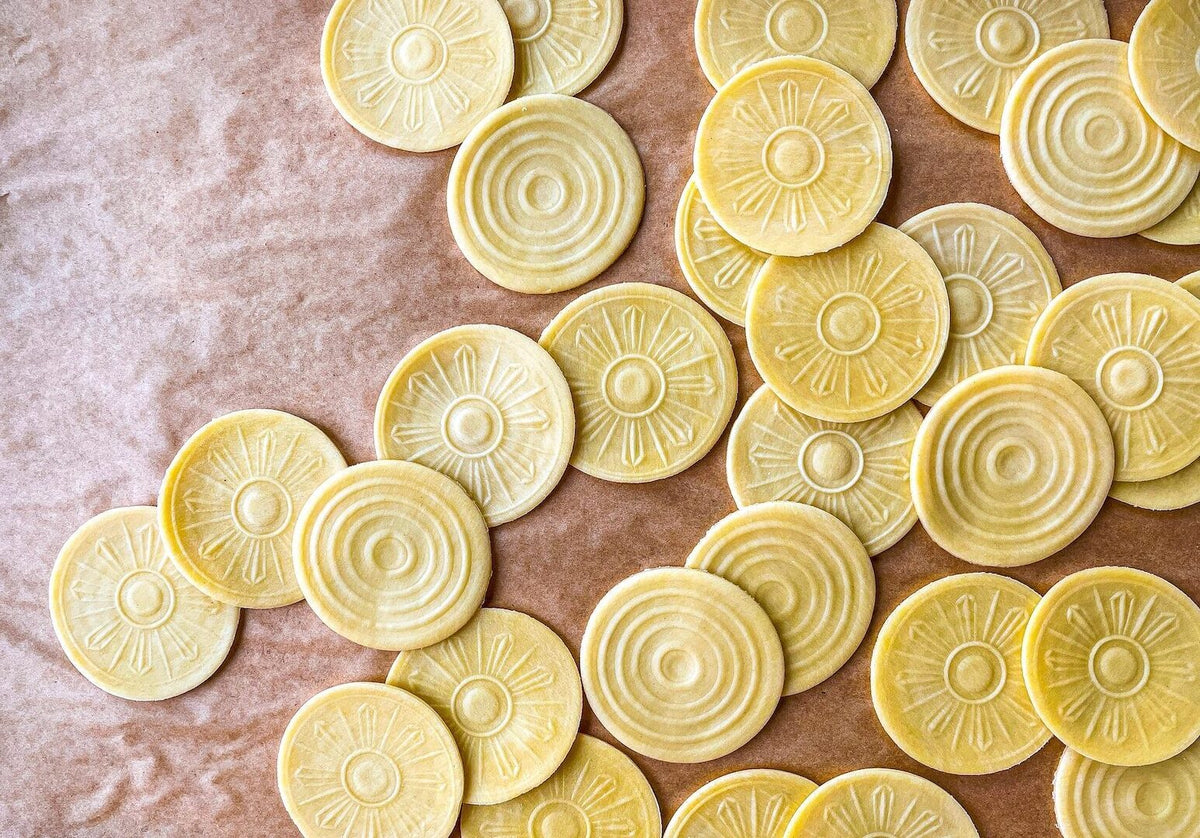
Homemade Corzetti Pasta
|
|
Time to read 2 min
|
|
Time to read 2 min
Made by imprinting circles of pasta with a special stamp, corzetti may just be one of our favorite shapes of all time (although I think we’ve said that about a dozen other shapes, too).
The technique to make them is more or less like cutting out cookie dough with a cookie cutter. In other words: you can’t really mess them up. It’s a fool-proof pasta shape (so long as you get the dough right) and it’s great for beginner pasta makers (and yes, two-year-olds, too).
Hailing from Liguria, corzetti were traditionally enjoyed among the Italian Renaissance courts. The design bore a coat of arms or decorative symbol to represent the special occasion at which they were to be served. As for the poor, a different type of corzetti was prepared: little flat disks in the shape of a figure eight made by pressing down two ends between your thumb and index finger. Today, you can find both shapes throughout region of Liguria.
Their flat disk shape means they are the perfect vehicle for smooth sauces like pesto or blended herbs and nuts, but can also act as a little “plate” for other additions like green beans, potatoes, or mushrooms. The imprinted design also has a function beyond aesthetics: the little grooves help to capture sauces better.
While they seem intricate, they are one of the simpler shapes to make. You don’t need any special hand techniques –all you do is roll the dough out flat and cut out the coins with a special stamp. If you have a hand-cranked pasta machine that’s helpful in getting the dough thin enough, but you could also do this by hand with a rolling pin.

30 minutes, 30 minutes resting
7 minutes
2
225 grams all-purpose flour
2 whole eggs (about 60 grams each), at room temperature
1/4 cup water or white wine, at room temperature
On a large, clean surface such as a wooden pastry board, dump out the flour into a mound. Form a well in the middle with your fingers. Add eggs and begin to mix together with a fork. Continue mixing with your fingertips, adding a little water until the dough starts to come together into a ball. If the dough is too wet, add more flour. If it’s too dry, add a little bit more water. Knead dough until smooth and elastic, about 10 minutes.
Wrap the dough up in a damp kitchen cloth and set aside. Let rest at room temperature for at least an hour or in the fridge for up to 24 hours.
Prepare a tray with a kitchen towel and a sprinkle of flour.
When you’re ready to make the corzetti, unwrap the dough and divide it into four pieces. Start with one piece, and wrap up the rest to keep it from drying out.
Using a hand-cranked pasta machine , run the dough through the largest setting. Fold over three times and run it through again. Repeat this once more. Next, adjust the setting once or twice and run the pasta through a thinner setting. Finally, run it through the 3rd or 4th setting. You want the dough to be about 1/8 cm thick. Continue rolling out the rest of the dough in the same way.
Next, take your corzetti stamp . Use the bottom part of the stamp to cut out circles. Remove the scrap dough (you can save this and use it for soups!). Take one circle and put it on top of the larger part of the stamp. Take the top of the stamp and gently press it on top to imprint the design. Set the stamped corzetti onto your floured baking sheet. Continue cutting out the corzetti until you’ve used up all the dough.
Finally, boil the corzetti until al dente, about 5-7 minutes. Corzetti pair exceptionally well with fresh basil pesto!